The present article consists in a brief outlook of the nature of the diverse educational systems either in the rising and falling imperial realms or in the chaotic and worthless republics that lack sanctity, legitimacy, and humanity. Here you will find its fourth and last part. The three earlier parts you can read here:
and
The present part completes the tetralogy.
XXV. What Needs a Truthful National Education must fulfill in terms of Historical Identity, Cultural Integrity, Social Unity and National Expansion
Modern nations are fabrications based on deceitful Western European theories involving peremptory ideas, arbitrary concepts, controversial notions, absurd terminology, inconsistent argumentation, nonexistent abstraction, haphazard morality, and total lack of justification. As unnecessary novelties, modern nations do not emanate from a theoretical background that offers reasons to abandon the earlier types of states. This means that in reality, modern nations are provisory forms of counterfeit social organization based exclusively on working hypotheses founded on earlier assumptions and irrational decisions.
Examined on the basis of their aberrational structures, modern nations are ‘political nations’, because they are entirely defined by means of ‘politics’, which is their -first proposed (by self-styled philosophers) and then imposed (through dictatorial and deceitful processes later eulogized as ‘revolutions’)- inhuman system of organization. As blasphemous and chaotic assemblies, modern nations are diametrically opposed to all previous nations known and recorded in the History of the Mankind, which are ‘cultural nations’.
Because all ‘political nations’ are at the very antipodes of the ‘cultural nations’, modern nations cannot afford to take real History as it has been documented in textual and archaeological evidence. That is why all ‘political nations’ fabricate their own ‘National History’, as part of a ‘World History’, which is an indispensable delusional element of the nationalisms with which modern nation equip themselves to guarantee the blindness of their slaves, who are pompously called ‘citizens’ whereas they represent the most debased type of peer-on-peer abuse. Modern nations’ ‘National History’ is an enormous fallacy and an absolute distortion of the true historical past of each and every nation, and being directly linked to the emotional part of every individual, it generates extreme fanaticism, which is at the origin of all the uncountable wars that took place in modern times.

The fact that all ‘national histories’ and the subsequent nationalisms were diffused colonially by the great colonial powers of the West represents only a minor aspect of the entire problem. This point is certainly important only at the local level, but not at worldwide scale. Example: the incomplete, mistaken and fake narrative that today’s Egyptians believe as their ‘National History’, which is taught by the local National Education system, consists in a grave problem, but only for them – not for the Turks, the Iranians, the Russians or the Chinese.
Of minor importance are also the pre-arrangements made by the colonial academia for each and every case (: ‘nation’) so that the various local victims (: the slaves who are the recipients of these fake narratives) learn -as per the needs of the colonial agenda- an over-magnified, a magnified, a non-discriminatory, a minimized, an extremely minimized, a viciously altered or even a totally concealed (and therefore unknown) version of their own real past and real National History. These pre-arrangements constitute a grave problem indeed only at the regional level, but not at worldwide scale.
Example: the facts that a) today’s Sudanese believe as their ‘National History’ an extremely minimized version of their own real National History, b) today’s Oromos (subjugated in the 19th and 20th c. by the Abyssinians and persecuted in the criminal, colonial tyranny of Abyssinia/Fake Ethiopia) do not know that their National History has unfolded over many millennia and does indeed comprise monuments located in today’s Sudan, and c) today’s Abyssinians believe as their ‘National History’ an over-magnified version of History to which parts of other nations’ History have been peremptorily, deceitfully and viciously added have great importance at the regional level of Eastern Africa, but are totally insignificant to the Tunisians, the Kazakhs, and the Yemenites.
What is vitally important at all levels – local, regional and worldwide – is the fact that within modern nations’ fake ‘National History’ the respective nations’ true historical identity, genuine cultural integrity, authentic social unity and the normal, natural and necessary national expansion are duly distorted and indexed in the colonial powers’ comprehensive agenda of world supremacy. This means very simply that the innumerable historical distortions deliberately made here and there, favorable to some, prejudicial to others, have all been extremely harmful for all, first because they terminate the real historical existence of the ‘cultural nations’ by transforming all these nations into ‘political nations’ and second because, irrespective of favor or disfavor (as per the version of fake ‘National History’ that has been locally adjusted), the only real benefit goes to the colonial powers and to their agenda, which led them to world supremacy.
As it can be surmised, the self-disastrous educational system of the ‘political nations’ involves therefore the teaching of the fake ‘National History’, which engulfs every modern nation into the self-disfiguring delusion that the colonial powers have ascribed to it. That’s why modern nations progressively lost their historical identity, genuine cultural integrity, authentic social unity and the normal, natural and necessary national expansion, being reduced to pathetic instruments and tools of the colonial powers.
The only true and successful exception in the entire world was made by Kemal Ataturk’s Turkey, which was instituted as a ‘cultural nation’ at the very antipodes of all the worthless colonial structures that have been fabricated as ‘political nations’. The founder of Modern Turkey envisioned for Anatolia (Turkey’s Asiatic part, which is the backbone of the nation) an unprecedentedly exceptional role worldwide, setting up a constitution, which provided for the formation of a ‘cultural nation’ within the modern world. Contrarily to what happened in the USSR, Nazi Germany, Fascist Italy, and People’s Republic of China the one-party system was not instituted in Turkey in order to eliminate opposite or dissenting voices (like Kerensky in Russia and Chiang Kai-shek in China), but with the scope of preserving social unity at the nationwide level.
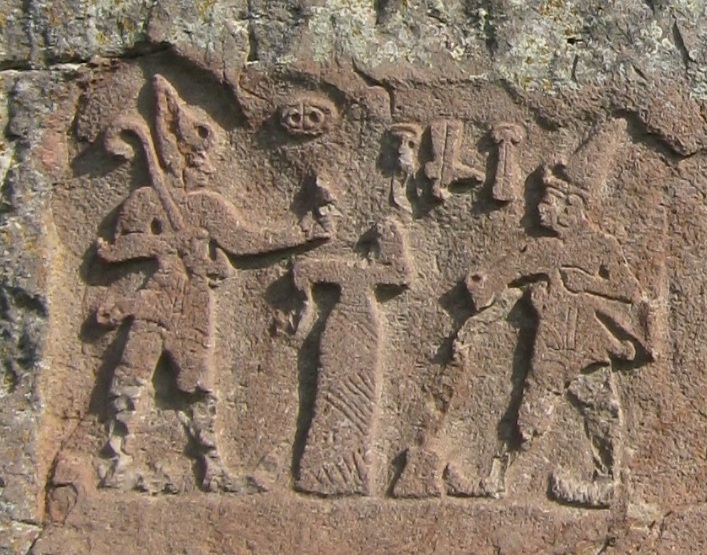

As a matter of fact, Kemal Ataturk’s unique and ingenious achievement is tantamount to taking a negative reflection (i.e. the modern Western concept of ‘political nation’) and using its constituent parts in reverse to generate a positive archetype. Historical education in Kemal Ataturk’s Turkey was totally unrelated to all colonial models of fake ‘National History’. It represented an effort to go beyond distortions and represent the true History of Anatolia and Afro-Eurasia, so that Modern Turks fully comprehend their historical identity, without over-emphasizing one topic or dimension at the detriment of another.

Thus, while preserving the genuine cultural integrity of Anatolians, the truthful National Education, which was instituted in Turkey at the times of Kemal Ataturk, offered to the average Turks the true reflection of the Anatolian and Afro-Euro-Asiatic past, keeping a perfect balance among its eight (8) genuine elements:
– the Anatolian Hittite past as part of the Ancient Mesopotamian and Oriental world,
– the Ancient Greek-Roman Mediterranean cultural heritage,
– the diachronic role of Anatolia as a bridge between East and West,
– the key position of Anatolia as a bridge between North and South,
– the Turanian, Central and Eastern Asiatic world,
– the Islamic world and its universality from the Atlantic to the Pacific,
– the Eastern Roman Christian prototype of the Ottoman Empire, and
– the Seljuk, Ilkhanid, Timurid, Akkoyunlu and Ottoman past.
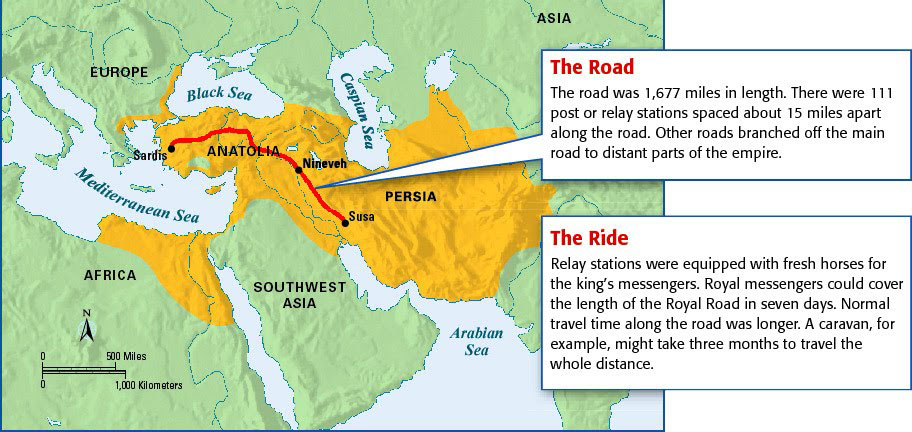
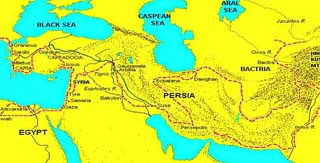

As a modern ‘cultural nation’, free of fake ‘National History’, the Turks -formed on the basis of the absolutely secular standards of Kemal Ataturk’s National Education- can find their correct path in terms of normal, natural and necessary national expansion; this was the wish of Kemal Ataturk, who knew that, in his time, he only set the foundations of an enormous and majestic future to come.
A truthful historical education does not mean only ‘titles of topics’, but it basically involves genuine, comprehensive contents and trustworthy interpretation of the historical sources. Consequently, Turkish National Education’s contents have to be at the very antipodes of the Western colonial falsification of History, so that Kemal Ataturk’s pledge be finally implemented. As it can therefore be understood, it is not enough that several universities in Turkey have faculties of Humanities with departments of Ancient Greek and Roman History. In itself, this situation is meaningless; what matters in this regard is that the Turkish professors, specialists, intellectuals and researchers focus their studies on topics related to Ancient Greek and Roman History that have been concealed or distorted by the Western colonial academics.
Example: it does not matter to only teach in Turkish universities’ departments of History and Archaeology about the Macedonian-Iranian Kingdom of Commagene or to study and publish about the Ancient Greek inscriptions of Nemrut Dagh peak sanctuary; what matters is rather to expand and demonstrate why and in what the Kingdom of Commagene, within the context of Ancient Greek History, was more important, more influential, and more determinant than, for instance, the Ancient Greek city of Athens, its monuments (such as Acropolis and Parthenon) and its contribution to the History of Civilization, which have long been deliberately but absurdly over-magnified by the Western European colonial academics and forgers.

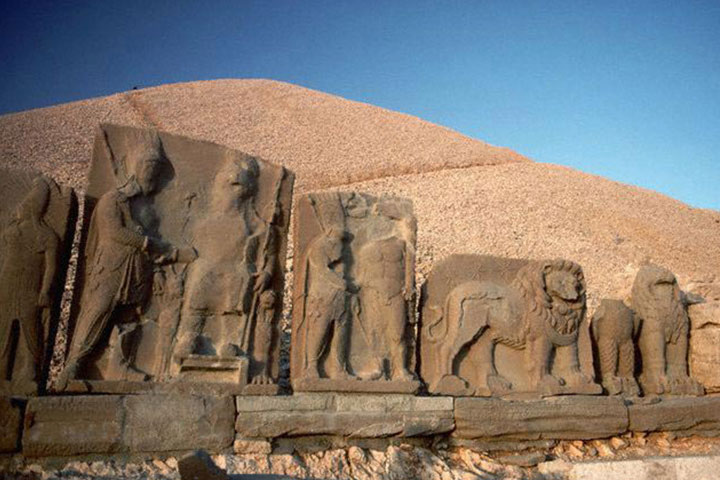



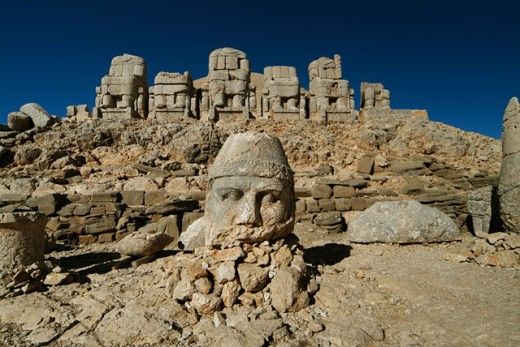
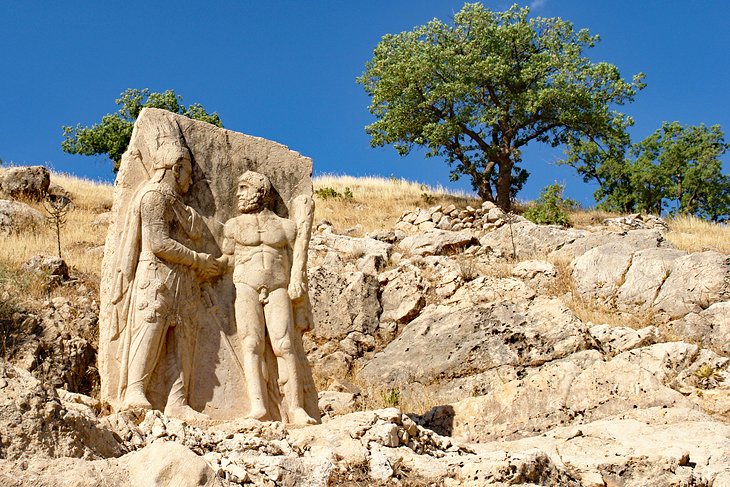
Turkish professors and specialists of Ancient Greek History waste their time and that of their students and readers, offering no service to their community, society and nation, if they do not focus on, and if they do not present in public, the numerous historical events that reveal a totally different reality of the Ancient Greek and Roman world, and which have been concealed the by Western colonial academics and their puppets, i.e. the monkeys of the so-called Greek ‘universities’.
It is utterly useless to teach Ancient History of Greece and Rome in Turkey, if you don’t extensively focus on the fact that, based in Commagene and Cilicia and backed by the Kingdom of Pontus, the Mithraist Greek pirates of the 1st c. BCE, after having totally rejected the inanity of Ancient Greek politics, rhetoric, demagoguery, philosophy, and religion, and after having adhered to the Iranian religion of Mithraism, attacked all important Ancient Greek shrines, irrevocably desecrated them, performed Mithraic mysteries there instead and instituted among Greeks Iranian religious rituals, thus eliminating the inferior and meaningless Ancient Greek religion and imposing Mithraism among the Ancient Greeks.
These concealed facts, these critical pieces of info, these hidden realities, if fully revealed, diffused, explained and analyzed worldwide, kill the Western colonial agenda, dismantle the historical forgery that the colonial powers present as ‘History’, and -more importantly- destroy all the Western political plots for which all these pieces of Western historical fallacy have been invented. It is essential for anyone wishing to outmaneuver the colonial plots and schemes against countries, nations, and states to know that there has not been any political maneuver, international development, colonial scheme for which the colonial academia of Western Europe and North America did not prepare a piece of absolutely false history. The Western falsification of History is not a target for the colonial powers; it is the means for them to achieve their political goals. This is an enormous academic construction and there is no chance for anyone to prevail at the level of bilateral or international relations without first outmaneuvering the historical forgeries composed and propagated to offer support to a political claim.
———————————————————————————————-






Despite the fact that Delphi, Delos, Dodoni, Olympia, Argos, Corinth, Thebes, Sparta and Athens are located on Greece’s territory, the most important monuments of the Ancient Greek world are located on Turkey’s territory. This offers Turkish scholars a great chance to come up with a systematic rebuttal of the colonial version of Ancient Greek History which has been pre-arranged to fit the political interests of England, France, America and their lackey, i.e. the prefab state of Modern ‘Greece’.
————————————————————————————————————–
XXVI. How Theological, Pseudo-Religious Indoctrination damages a Truthful National Education
In our days, the clash between the political nations of the West and the remaining cultural nations that reject the Western model represents a ferocious struggle for the Liberation of the Mankind from the Western colonial delusion, which started with the Renaissance, the fake ‘Discovery’ of the world, and the colonization of all the continents by the Western European colonials.
In this regard, the polarization around the fake ‘National History’ (which is taught in a colonial metropolis like France or England and in a colonial fabrication, namely a ‘political nation’, like Greece, Iran, Israel or Egypt) and the true historical past (which is taught and interpreted within the context of a truthful National Education of a ‘cultural nation’) consists in the real field where the national interests of two opposite states or nations clash with one another. This clash is a matter of true historicity versus fake historicity.
Historicity is the matrix of all historical claims; in other words, ‘you’ demand a land as ‘yours’, because ‘you’ supposedly were there before others arrived or because ‘you’ developed there a greater civilization, which is documented in textual evidence. Colonial Westerners abhor oral cultures (because in reality they feel inferior to them) and they systematically and ceaselessly tried to minimize, disregard and disrespect them, but this is an entirely different and very vast topic. However, historicity is merely a matter of historical conceptualization, contextualization and interpretation; and these processes have been aptly undertaken by the colonial academics only on political purpose, and not out of a genuine and impartial interest in historical truth.
This is exactly what a modern ‘political nation’ is and how it functions: the political-diplomatic-academic establishment works in full concertation to prepare the Fake History needed, before they announce in public the historicity that they demand and the claims that they raise. Only highly conscious cultural nations with very strong foundations of Historical Education can refute the claims raised, discredit the fake historicity demanded, and outmaneuver the political plot.


Obsolete realms failed to carefully monitor the (attested as early as the 16th c.) Western European colonial countries’ method of weaponizing Knowledge and Antiquity; it is quite clear that, speaking of ‘obsolete realms’, I mean enormous but absolutely ineffective empires, like the Safavid-Afshar-Qajar Iran (terminated in 1925), the Ottoman Empire (terminated in 1923), Qing China (terminated in 1912), and the Mughal Empire (terminated in 1857). These old-fashioned structures had absolutely no means to react to the aforementioned method of the Western European colonial countries, and they finally succumbed. It is extremely important to state -in few simple, yet striking, words- what actually happened to these vast but absolutely undefendable states: mere lies destroyed entire empires.

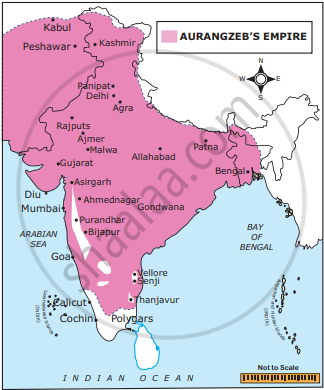
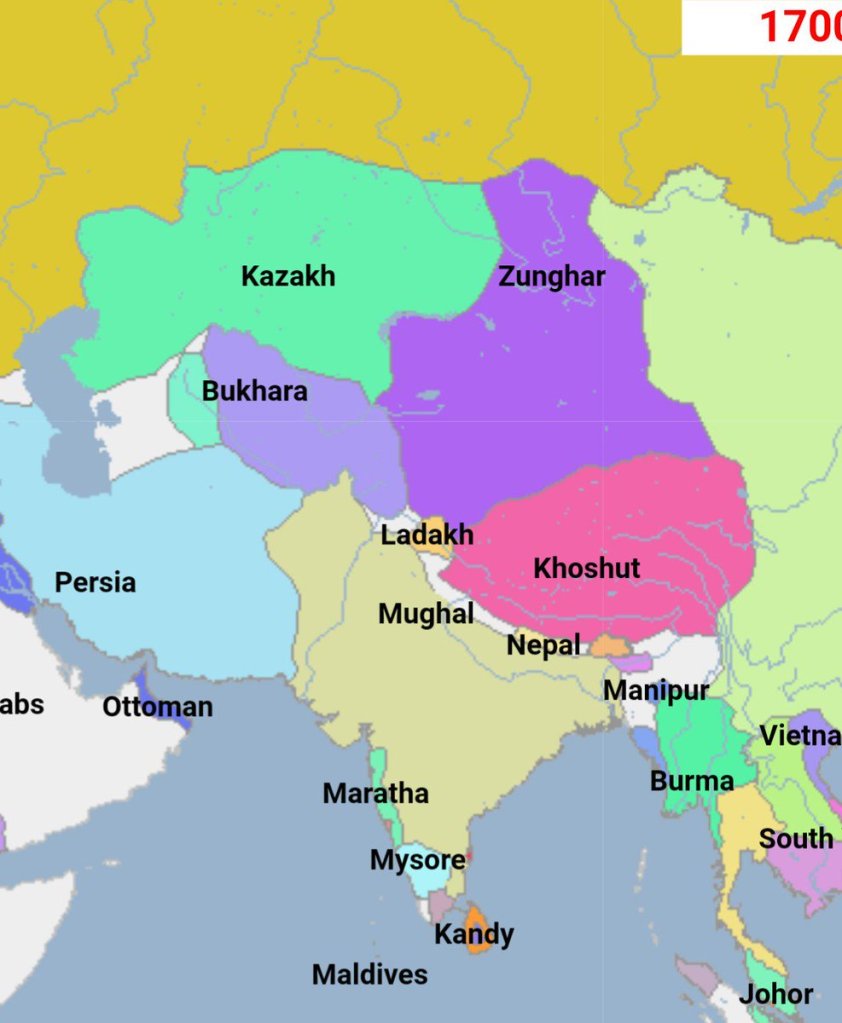


One has however to add that the lies were extremely sophisticated and solidly founded on Knowledge (which was however kept hidden) and Truth (which was publicly distorted but privately accepted). Unlike the Crusaders, the colonials did not engage in nonsensical disputes of low level, like ‘Muhammad is a prophet’ vs. ‘Muhammad is not a prophet’. This type of controversy was that of the times of Crusaders; then, the ‘clash’ was between a ‘lie’ and a ‘truth’. But after Renaissance, Western European colonials did not get engulfed in this type of quarrel anymore. Knowing that, in the meantime, the entire Islamic world had scientifically, academically, intellectually, mentally, culturally, spiritually and educationally collapsed (because of the prevalence of the evil theologians), the colonial academia produced an enormously sophisticated delusion and a complex deception scheme that they projected onto their absolutely unprepared and totally impotent enemies, who fell like dominoes.
When it comes to a ‘political nation’, its fake historicity, erroneous historical claims, and distorted National Education, it is always a matter of sheer utilization of History (either through its distortion or via its truthful representation) for purposes related to the promotion of national interests. Historical claims against other nations can at times be raised in accordance with each country’s national interests or due to external instigation or only for reasons of internal consumption and political propaganda.
The point is that, in modern times, Islamic Theology-based Education is totally useless, as it cannot prove anything, and therefore it is only utilized by Western colonials to further defame the religion that the said education and theology tend to supposedly serve. In this regard, it is noteworthy that every religious (in reality: ‘theological’) indoctrination became early (already in 19th c. Anglo-French colony ‘Egypt’) a formidable trap set by the colonial gangsters in order to engulf the locally targeted nation into a very convenient (for the colonial West) impasse. As a matter of fact, all types of theological indoctrination do greatly harm a truthful National Education, because they cause an enormous waste of potential academic resources.
Today’s decayed Ulum al-din (‘Islamic religious sciences’: Kalam, Tafsir, Tajwid / Qiraat, Hsdith, Fiqh, Sirah, etc.) are not even a shadow of their past glory; this is so because, when the Islamic Sciences (Astronomy-Astrology, Chemistry-Alchemy, Mathematics, Natural Sciences, Medicine, etc.) were prohibited in Ottoman Istanbul at the end of the 16th c., all Islamic religious sciences were progressively adjusted to the anti-scientific Islamic theological doctrine that prevailed. None of these systems (Ulum al-din) can possibly help people, nations, academies, governments or states
– outsmart a colonial lie that distorts the History of Ancient Greece and Rome;
– out-think a colonial forgery regarding the History of Ancient Oriental Empires;
– outwit a colonial fallacy about Ancient Oriental spirituality, wisdom and science;
– outplay a colonial scheme concerning the Islamic world;
– outfox a colonial plot against African and the Asiatic nations;
– outflank a colonial stratagem targeting one government; and
– outdo a colonial plan providing for the subordination of the rest of the world.
In our times, Ulum al-din and every theological seminar are only a matter of personal interest and must not be funded by the state or offered as studies in public anytime anywhere. They can only damage detrimentally a Muslim country, as they already destroyed many great Islamic Empires. An example will be in this case characteristic.
Back in the 19th c., the notorious Modern Greek ‘Megali Idea’ (‘Great Idea’, i.e. the substitution of the Ottoman Empire by a Neo-Greek pseudo-state, which would be the perfect tool at the hands of the English and the French) was exactly a matter of historicity; although they are the descendants of an ethnic amalgamation of Slavic, Albanian, Eastern Roman, Vlach, Turkic and Latin (Crusaders) elements, Modern pseudo-Greeks, posturing as the heirs of the Ancient Greeks, demanded vast territories in Anatolia, ‘because’ these lands were inhabited by the Ancient Greeks in the past and consequently, they were still full of Ancient Greek antiquities in the 19th c. The useless and idiotic pseudo-Muslim theologians of Ottoman Constantinople were left speechless; their unfathomable ignorance and compact stupidity was to believe that they could defend an empire with spells, incantations and prayers from the Quran. This is quite telling: https://www.greecehighdefinition.com/blog/-megali-idea-what-if-greece-conquered-turkey

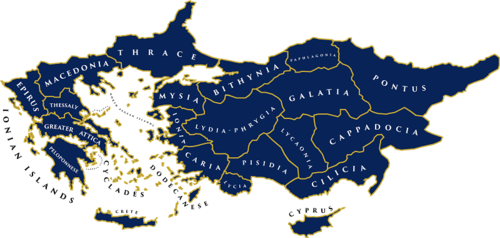
However, the Quran failed to oppose the colonial plot against the Ottoman Empire and to outsmart the disreputable lies and the historical forgery of the Western European academia; this is so for the very good reason that the Quran was not revealed for this purpose, and it was only the stupidity and the ignorance of the useless sheikhulislam, sheikhs, imams and theologians, who imagined otherwise. Without Kemal Ataturk, the modern pseudo-Greek fabrication of the English and the French would control today a territory greater than 350000 km2, having in Asia an area larger than in Europe.
This unveils the secret lie and shows the hidden plot of the colonial powers opposite the Islamic world. You cannot oppose colonial schemes with religion. Religion is useless opposite conniving diplomats, Orientalist forgers, Hellenist intellectuals, classicists, colonial academia, evolutionist terrorists, atheist extremists, and paranoid feminists. To oppose these armies, you need deeply and widely educated scholars, who advanced far beyond the delusion of Western Renaissance, Humanities and pseudo-representation of the World History.
‘You cannot oppose colonial schemes with religion.’
Today’s Turks must understand it as soon as possible, close down all useless and evil pseudo-Islamic theological schools, and get involved in the academic-intellectual combat of the Western fallacies of Orientalism, Hellenism, Pan-Arabism, Zionism, Islamism, Evolutionism, Atheism, etc. The only form of religion one Muslim can practice today is knowledge, study, research, exploration, and revelation-diffusion of the historical truth in absolute rejection of the Historical Forgery of the Western world.
That is why for today’s Turks, …
1- the Hittite epic Ullikummi is more vital than Matrakçı Nasuh’s Süleymannâme;
2- the Hittite king Mursili I is more important than Abu Bakr;
3- the History of Urartu Kingdom is more critical than that of the Omayyad Caliphate;
4- Emperor Sargon of Assyria is more pivotal than Omar ibn al Khattab;
5- the Achaemenid Shah Darius I the Great is more crucial than Uthman ibn Affan;
6- the Seleucids are more significant that the Abbasid dynasty;
7- Antiochus I Theos of Commagene is more indispensable than Ertuğrul;
8- Cleopatra of Egypt is more relevant than Khadijah bint Khuwaylid;
9- Strabo of Amasya is more necessary than Ibn Battuta;
10- Lucian of Samosata is more essential than Aşıkpaşazade;
11- St. Basil of Caesarea is more cardinal than Abu Hanifa;
12- John Chrysostom is more valuable than Al-Shafiʽi;
13- St. Ephrem the Syrian is more useful than Malik ibn Anas;
14- the shrine and the cults of the Aramaean goddess Atargatis at Manbij (Hierapolis) are more noteworthy than the tomb of Suleyman Shah;
15- Justinian I is more momentous than Sultan Selim I;
16- Heraclius is more substantial than Sultan Mahmud II;
17- the Eastern Roman Icon-Fighters and the Paulicians are more weighty than the Naqshbandi and the Qadiriyya;
18- the Seljuks of Rum are more epoch-making than the Ottomans;
19- the Akkoyunlu are more historic than Tanzimat;
20- Timur (Tamerlane) is more exemplary than Bayazit I; and
21- Kemal Ataturk is more central than prophet Muhammad.
It must be beforehand stated and markedly stressed that the aforementioned twenty-one (21) cases of pedagogical contrast do not reflect proper comparative evaluations at the spiritual, historical, literary or academic level, which would otherwise be meaningless and purposeless, but they constitute strictly utilitarian juxtapositions and cluster comparisons for the need of Turks to consider ways as to how to reject historical claims expressed in national(ist) political discourses, educational manuals, academic treatises, and international newspapers.
By widely diversifying the foundations of their Historical Education, today’s Turks will get enormous benefits and they will become able to discredit the efforts of other countries and administrations to portray today’s Anatolians, who are the heirs of 5000 years of historical-cultural continuity and the most authoritative representatives of the transcendental genius of Orient, as migrating newcomers having ‘recently’ arrived from Central Asia and East Siberia.
It is not a matter of
a) Turkey (Turkey’s National Education and version of History) ‘defending’ or ‘diffusing’ or ‘imposing’ ‘History of Turkey’
and
b) Iran (Iran’s National Education and version of History) ‘defending’ or ‘diffusing’ or ‘imposing’ ‘History of Iran’; this would be a level of idiots and ignorant imbeciles.
It is a matter of
i) what version of History of Turkey and History of Iran Turkey’s universities must teach, promote, propagate and impose, and
ii) what version of History of Iran and History of Turkey Iran’s universities teach, promote, propagate and impose.
It is also a matter of fending off improper accusations coming from individuals, groups, organizations and states that show let’s say an interest for the conditions of life of Turkey’s Christians, without however being Christian themselves in the first place. Example: how could one accept Greece’s criticism of Turkey as regards the Human Rights of Christian minorities in Turkey, when Greece and Greece’s pseudo-Christian Church prohibit the translation to Modern Greek, the publication, the study, and the nationwide diffusion of works of Fathers of the Christian Church like John Chrysostom, plus the discussion and the debate about them?
What business is it of theirs to discuss issues pertaining to Christian minorities in Turkey, when the Eight Homilies against the Jews by St. John Chrysostom, Father of the Christian Orthodox Church, are deliberately kept secret and unknown to all Greeks, while bishops and priests are not allowed to speak about them, let alone popularize the critical topic among the faithful?
All the same, knowing about or studying the valuable opuses, treatises and speeches composed by the Cappadocian school of Christianity, a Modern Turk becomes better acquainted with his own country’s past, represents it better, and defends it more effectively against opposite historical claims or colonial distortions. A systematic and comprehensive reflection of Anatolia’s past in Turkey’s National Education will solidify today’s Turks’ historical identity, strengthen their cultural integrity, and promote the nation’s social unity.
On the contrary, an indoctrinated theological approach to the National Education only deprives students and schoolchildren from what is necessary for every Turk to know in order to best conceptualize, contextualize and interpret the History of Anatolia and better defend the Turkish nation’s historical claims and national interests.

XXVII. The 12 Pillars of Turkey’s National Education
What follows is the enumeration of Turkish National Education’s 12 pillars involving in total 80 units; at this point, I have to reiterate that the real value of an educational system does not lie in the ‘titles of topics’ included, but mainly in the genuine, comprehensive contents and in the trustworthy interpretation of the historical sources.
Note: commas separate distinct ethnic-cultural units, whereas hyphens denote cases of either cultural amalgamation or historical and cultural continuity.
Pillar I: Oriental Civilizations
1- Hatti – Hittite – Luwian Anatolia
2- Sumerian-Akkadian (Assyro-Babylonian) Mesopotamia
3- Hurrian & Canaanite Syria – Phoenicia
4- Urartu, Neo-Hittite, Aramaean Anatolia, Mesopotamia and Syria
5- Canaanite – Phoenician Cyprus
6- Peleset – Pelasgian Aegean Sea
7- Anatolian – Canaanite – Egyptian/Hamitic (Berber) Crete
8- Ancient Oriental religions, spirituality, mythologies, epics and sacred texts, wisdom, literature, laws, arts and architecture
Pillar II: Late Antiquity
1- Achaemenid Anatolia and Iranian imperial heritage
2- Phrygian, Lydian, Lycian, Carian, Aeolian, Ionian, Doric Anatolia
3- Macedonian Attalid Anatolia, Seleucid imperial heritage
4- Commagene Iranian-Macedonian syncretism and spiritual heritage
5- The Aramaeans: from Syria-Mesopotamia to Anatolia, Egypt, Iran, India and Central Asia – Urhoy (Urfa), Palmyra (Tadmor), Dura Europos, Nisibis (Nusaybin), Hatra, Seleucia-Ctesiphon, Bosra, Rekem (Petra), Mada’in Saleh
6- Imperial Roman Balkans, Anatolia and Orient (Syria, Mesopotamia, Palestine)
7- The great conquerors: Assurbanipal in Niwt (Thebes of Egypt), Cambyses in Napata (Cush/Sudan), Darius the Great and the re-opening of the Suez Canal, Alexander the Great in the Indus River Valley, Marc Antony in Praaspa (Takht-e Suleyman), Trajan in the Caspian Sea and the Persian Gulf shores
Pillar III: The Formation of a Multicultural and Multipolar World Community
1- The overwhelming impact of Ancient Oriental civilizations on the formation of the Occident (Balkans, Greece, Rome, Western Europe): 4000-30 BCE
2- Martin Bernal’s ‘Black Athena’ & Edward Said’s ‘Orientalism’: the refutation of the Western colonial fallacies (namely Classicism, Hellenism and Orientalism)
3- The diffusion of Ancient Oriental spirituality, cultures, religions, cosmogonies, cosmologies, messianic eschatology, mysticisms, and imperial universalisms in the Roman Empire and across Europe: Mithras and Isis in the West – Mithraea and Isea excavated in Europe
4- The Oriental character of the Roman Empire
5- The silk-, perfume (incense)-, and spice trade routes across lands, deserts and seas, and the formation of a multicultural, multilingual, multi-religious and multipolar world community
Pillar IV: The Rise of Multi-ethnic Religions across the Afro-Eurasiatic Landmass
1- The spiritual, cultural, religious, and esoteric syncretism of the Arsacid-Sassanid / Roman times: the formation and spread of Chaldean Wisdom, Ostanism, Hermetism, Gnosticisms, Early Christianity, and Manichaeism
2- The Christianization of Syria-Palestine, Anatolia, Mesopotamia, Egypt and the Mediterranean Sea: Christianity as official religion of various Oriental kingdoms {Abgarid Urhoy (Urfa), Armenia, Georgia, Abyssinia (Axum)} and of the Roman Empire; the foundation of Nova Roma (New Rome) – Constantinople – Istanbul
3- The Cappadocian Fathers of the Christian Church; John Chrysostom and his refutation of the Jews; the Schools of Antioch (Antakya) and Alexandria; the Christological Disputes and the Christian Councils: Monophysitism (Miaphysitism), Nestorianism
4- Monophysitism (Miaphysitism) from Tur Abdin and Derzafaran to Wadi Natrun (Egypt), Makuria and Alodia (Sudan)
5- Nestorian Christianity: the Anatolian-Mesopotamian Christianity
6- The Sassanid Iranian – Roman/Eastern Roman wars and the Trade with Yemen, East Africa, Turan (Central Asia) and China
Pillar V: Turan
1- Xinglongwa, Xinle, Hongshan, Zhaobaogou, Kelteminar, Afanasievo, Sintashta, Okunev, Andronovo & Tazabagyab, and Karasuk cultures across Northern and Central Asia; Tarim Basin mummies (early Tocharians)
2- Irmen, Tagar, and Tashtyk cultures & Slab Grave culture; Yuezhi; Xiongnu (Hun) confederation; Han China; Donghu; Han–Xiongnu War; Kushan Empire; Wuhuan & Xianbei; Hun-Xianbei script; early mentions of Tengrism
3- Khitan; Rouran Khaganate; Tokharians; Hephthalite Huns; Göktürks {First and Second (western and eastern) Turkic Khaganates}; First Bulgarian Empire; Türgesh; Bulgars, Khazars, and Pechenegs; Kangar union; Oghuz Yabgu State; Uyghur Khaganate; Kipchak, Kimek–Kipchak confederation, Cumans and Cuman–Kipchak confederation; Tatars; Kara-Khanid Khanate; Yenisei Kyrgyz Khaganate
4- Tengrism (‘Shamanism’), Mithraism, Zoroastrianism, Buddhism, Manichaeism and Nestorian Christianity among Turanians
Pillar VI: Islam
1- Propher Muhammad, Early Muslims, the Spread of Islam, Umayyad dynasty
2- Abbasid Caliphate; the contribution of Turanians and Iranians to the Abbasid times’ military expansion, imperial administration, scientific-academic-intellectual advance and breakthrough; the fragmentation of the Caliphate and the rise of Iranian and Turanian culture and imperialism
3- Islamic Sciences as the Ancient Oriental (Assyrian-Babylonian, Egyptian, Iranian) heritage transmitted via Aramaeans (School of Nisibis/Nusaybin) and Iranians (Gondishapur Sassanid University) to Abbasid Muslims (Dar al Hikmah)
4- Christianity and Islam in Anatolia from Heraclius to the Battle of Manzikert: Eastern Roman Empire (“Romania”) and Iconoclasm; Paulicianism in Anatolia and the Caucasus; Khurramites and Constantinople against the Abbasid armies
5- Islamic spirituality and messianic eschatology; the survival of other Oriental religions at the times of the Caliphate: the Sabians of Eski Sumatar; the Mandaeans; Nestorians and Manichaeans from Mesopotamia to China
6- Worldwide diffusion of Islam 7th–11th c.: South Asia, Central Asia, Africa, Europe {Iberian Peninsula, Septimania (Occitania: Southern France, Italy, Sicily, Crete, Aegean Sea}; the Islamic Caliphate and China
7- Ferdowsi: the epic incorporation of the Iranian-Turanian spiritual-cultural heritage into the cultural life of Muslims in Asia
Pillar VII: The Ghaznavids, the Seljuks, the Crusades and the Collapse of the Eastern Roman Empire (“Romania”/Ρωμανία)
1- The Ghaznavid Empire and the advanced Islamization of the Valley of Indus and South Asia; the Ghurid Empire
2- The Seljuks from Central Asia to Iran to Anatolia, the science of governance of Nizam al-Mulk
3- Rum Sultanate: Ferdowsi and the culture of the Seljuks; the reasons of Anatolia’s Islamization; the Sultan and the Basileus: the long shadow of the Rome-New Rome rivalry before and after the Schisms (869 and 1054); the Anatolian beyliks: Artuqids, Danishmend, Mengujekids, Saltukids, etc.
4- Anatolian Islamic spirituality as continuation of the anti-Constantinopolitan Anatolian mysticism, Iconoclasm and Paulicianism: Jelaleddin Rumi & the Mevlevi Order and Haji Bektash & the Bektashi Order
5- Turanian Mamluk states in Western, Central, South Asia and Africa
6- The Crusades as first Western attempt to destroy the Orient (Orthodox Christianity and Islam)
Pillar VIII: Genghis Khan, the Genghisid Empires, the Ilkhanate and the Multi-divided Anatolia, the Turanian Sultanates of South Asia, Timur and the Timurid dynasties
1- The Turanian invasions of Genghis Khan and the Turanian (‘Mongol’) Empire
2- The successors of Genghis Khan, the ‘Mongol’ civil war, and the division: Golden Horde, Ilkhanate, the Chagatai Khanate, and the Yuan dynasty of China
3- Hulagu, the destruction of Abbasid Baghdad and the ensuing benefits for Muslims
4- Nasir al-Din al-Tusi and the Islamic sciences, mathematics and astronomy; the Maragheh Observatory as meeting point for Eastern Romans, Seljuks, Iranians, Christian Aramaeans, Turanians, Chinese worldwide-leading scholars
5- The Turanian Sultanates of South Asia: Delhi and the Mamluks, the Khalji, Tughlaq, Sayyid and Lodi dynasties; the Bengal Sultanate
6- 14th c. Anatolia divided among the Eretnids, the Ilkhanate, the Karamanids, the Pontus Eastern Romans, the Jandarids, the Ottomans, and the other beyliks
7- Timur, his invasions and successors; Timur and the Ottomans; the Timurid Empire
8- Timurid Renaissance of Islam: the Samarqand Observatory, Islamic sciences, arts, letters and architecture
Pillar IX: Qara Qoyunlu, Aq Qoyunlu, Ottomans, Safavids, and the Golden Horde
1- Islamic Spirituality in 15th c. Anatolia, Caucasus, Iran and Khorasan: from the Zahediyeh to the Safaviyyeh to the Qizilbash and the Shahqulu movement
2- Kara Koyunlu, Ak Koyunlu and Ottoman Anatolia
3- Ottoman expansion in the Balkans during the 14th and 15th c.
4- The battle of Chaldiran (1514) and the definite division of the Islamic World
5- Islamic North: Eastern Europe, North Asia, and Siberia under the Golden Horde and its derivative Khanates during the 14th and 15th c.
6- Islam in Andalusia, Africa, and SE Asia from the Crusades to the beginning of Western European Colonial Era (16th c.)
7- The Ottomans: the Anatolian Sultanate metamorphosed to Eastern Roman Empire and to Islamic Caliphate
Pillar X: the Ottoman Empire, Safavid / Afsharid / Qajar Iran, and the Mughal Empire of South Asia
1- Western European Renaissance: progenitor of ‘reconquistas’, conquistadores, and colonial genocides in America, Africa, Asia and Europe
2- Reconquista in the Iberian Peninsula and the formation of the Spanish and Portuguese Empires; the infamous Treaty of Tordesillas (1494) or how Muslims lost the seas and the oceans of the Earth
3- Reconquista in Eastern Europe: the fabrication of a fake Russian Empire out of Turanian Muslims; Moscow’s expansion in Eastern Europe, North Asia/Siberia, and Central Asia
4- Gradual decay of the Ottoman Empire after 1580: destruction of the Istanbul Observatory, abandonment of the Islamic scientific research, disappearance of the Islamic sciences
5- Three major Islamic empires (Ottomans, Iran, and Mughal) versus six European empires: Spain, Portugal, France, Holland, England and Russia; Classicism as fake identity of Western European colonials and the weaponization of knowledge, science and technology
6- Islam under assault (1500-1800): the dismemberment of the Islamic World
Pillar XI: Western European Enlightenment, Nationalisms, Orientalism and the Fall of the Ottoman Empire
1- European Nationalism and the distortion of the historical concept of ‘cultural nation’
2- Romanticism and the ahistorical, fake divide ‘East and West’ as a vehicle for the promotion of colonial targets
3- Orientalism: the misrepresentation of the Orient
4- Hellenism: exemplary historical forgery projected onto targeted populations as ‘national dogma’ for the construction of fake nations-states – tools of the colonial powers
5- Western ‘World History’: projection of white supremacy and Western European racism onto the rest of the world as a form of inferiorization, subordination and enslavement of all the nations worldwide to the colonial powers
6- The creation of pseudo-localities and pseudo-nationalities as a means for the permanent dismemberment of the Islamic World: ‘Egypt’ instead of Misir; ‘Greece’ instead of Romania (Eastern Roman state); ‘Persia’ instead of Iran; ‘Russia’ instead of Turan; ‘Central Asia’ instead of Turan; ‘India’ instead of Mughal; ‘Judea’ (and later Fake Israel) instead of Palestine; ‘Libya’, ‘Tunisia’, ‘Algeria’ and ‘Morocco’ instead of Berber state; ‘Ethiopia’ instead of Abyssinia
7- The last century of the Ottomans and the Qajar Iranians-Turanians
8- The Opium Wars and the colonial assault on China; Russian advance in Central Asia
9- WW I and the end of the Ottoman Empire; the Iranian Empire divided between the English and the Russians; colonial involvement in the Caucasus region and the fabrication of the Armenian polity
Pillar XII: Kemal Ataturk, the Constitution of 1923, and Modern Turkey
1- The life and military career of Kemal Ataturk
2- The struggle for the salvation of Turkey (1919-1923)
3- The Constitution of 1924: fake nationalisms of the West (‘ethnic’ or ‘civil’ nations for ‘political’ states) vs. Modern Turkey’s genuine nationalism (‘cultural’ nation for a people’s state)
4- Turkey until the death of Kemal Ataturk
5- Modern Turkey after 1938
6- Rauf Dentash and the Turkish Republic of Northern Cyprus
—————————–
Download the article in Word doc:
